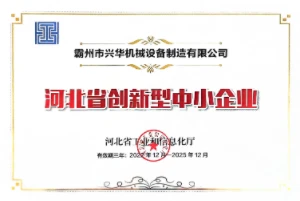seamless pipe production line
The Advantages of Seamless Pipe Production Lines
In today’s industrial landscape, the demand for high-quality piping solutions is steadily increasing. Among various types of pipes, seamless pipes have emerged as a preferred option due to their robust characteristics and reliability in various applications. The production of seamless pipes involves a highly specialized manufacturing process, wherein seamless pipe production lines play a crucial role. This article aims to explore the essential features of seamless pipe production lines, their production processes, and the benefits they offer to the industry.
Understanding Seamless Pipes
Seamless pipes are cylindrical tubes that are manufactured without any joint or weld, providing them with superior strength and resistance to pressure. They are typically made from materials such as carbon steel, alloy steel, or stainless steel and are used predominantly in industries such as oil and gas, construction, and automotive. The unique attributes of seamless pipes make them ideal for high-pressure applications where weld joints could fail.
The Seamless Pipe Production Process
The seamless pipe manufacturing process is intricate and requires advanced technologies. The primary methods employed include the rotary piercing process and the elongation process.
1. Rotary Piercing The production begins with heated billets that are placed in a rotary piercer. The piercing mill utilizes a pair of opposed rolls and a piercing plug to create a hollow tube from the solid billet. The process produces a hollow preform with a minimal thickness of the wall.
2. Elongation Following the piercing stage, the preform undergoes an elongation process. The tube is further processed in a mandrel mill, where it is elongated to the final diameter and wall thickness. This is typically achieved through a combination of rotary and axial forces.
3. Heat Treatment After elongation, seamless pipes often undergo heat treatment to enhance their mechanical properties. This process can include quenching and tempering, which helps to relieve stresses introduced during the manufacturing stages.
4. Finishing Operations The final steps include cleaning, straightening, and cutting to length. These operations ensure that the pipe meets the desired specifications and quality standards before it is shipped to customers.
seamless pipe production line

Efficiency and Benefits of Seamless Pipe Production Lines
Seamless pipe production lines are engineered for efficiency, precision, and flexibility. Below are some of the advantages of these systems
1. High Production Capacity Modern seamless pipe production lines are capable of producing large volumes of pipes in a relatively short period, addressing the increasing market demand effectively.
2. Superior Quality With a focus on stringent quality control measures at every stage of production, seamless pipe production lines ensure that pipes are free from defects, reducing the likelihood of failure in critical applications.
3. Cost-Effectiveness The automation of production processes reduces labor costs and minimizes material waste, leading to more cost-effective manufacturing. This efficiency translates to competitive pricing for end customers.
4. Versatility Seamless pipe production lines can be adjusted to produce various grades and sizes of pipes, accommodating different customer needs without the need to invest in additional equipment.
5. Environmentally Friendly Advanced production technologies often incorporate energy-efficient practices, and by reducing waste materials, these production lines contribute to more sustainable manufacturing processes.
Conclusion
Seamless pipe production lines are integral to meeting the demand for high-quality piping solutions across various industries. With their advanced manufacturing processes, these lines not only enhance production efficiency but also ensure that pipes are produced to meet stringent quality standards. As industries continue to evolve and require superior materials for complex applications, seamless pipe production lines will play an increasingly important role in the industrial sector. Embracing these innovations ultimately leads to better products, improved safety, and enhanced customer satisfaction in an ever-competitive marketplace.
-
High Frequency Straight Seam Welded Pipe Production Line-BzZhou Xinghua Machinery Equipment Manufacturing Co., LTD.|line pipe steel&welded gas pipeNewsJul.30,2025
-
High Frequency Straight Seam Welded Pipe Production Line-BzZhou Xinghua Machinery Equipment Manufacturing Co., LTD.|High Precision&Automated SolutionsNewsJul.30,2025
-
High Frequency Straight Seam Welded Pipe Production Line - BzZhou Xinghua Machinery Equipment Manufacturing Co., Ltd.NewsJul.30,2025
-
High Frequency Straight Seam Welded Pipe Production Line-BzZhou Xinghua Machinery Equipment Manufacturing Co., LTD.|Precision Welding, High EfficiencyNewsJul.30,2025
-
High Frequency Straight Seam Welded Pipe Production Line|BzZhou Xinghua|Precision Welding&EfficiencyNewsJul.30,2025
-
High Frequency Straight Seam Welded Pipe Production Line - BzZhou Xinghua|Precision Engineering&EfficiencyNewsJul.30,2025


